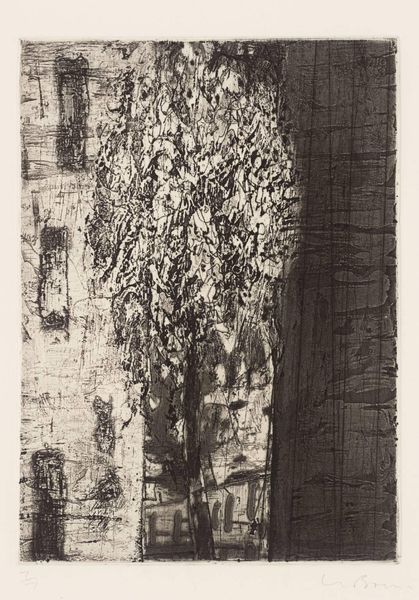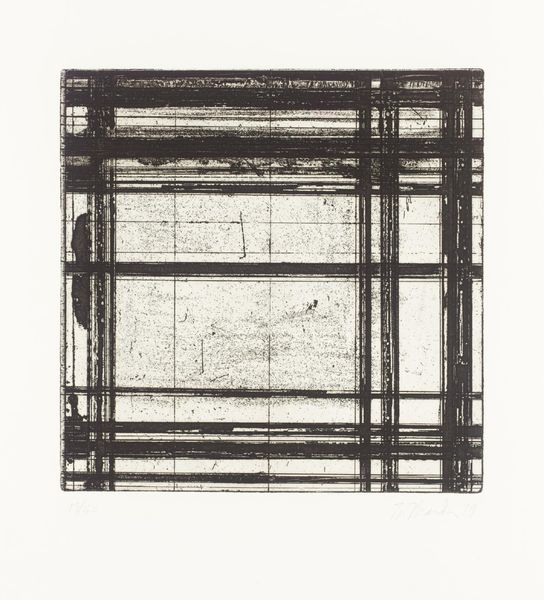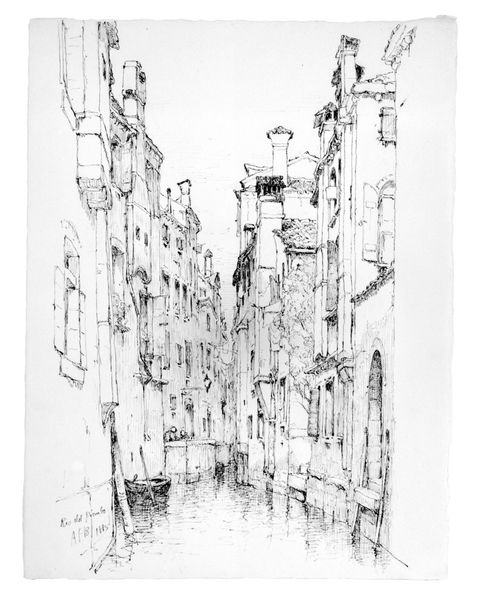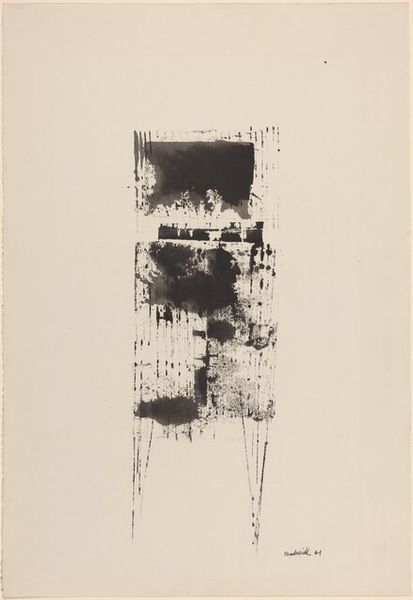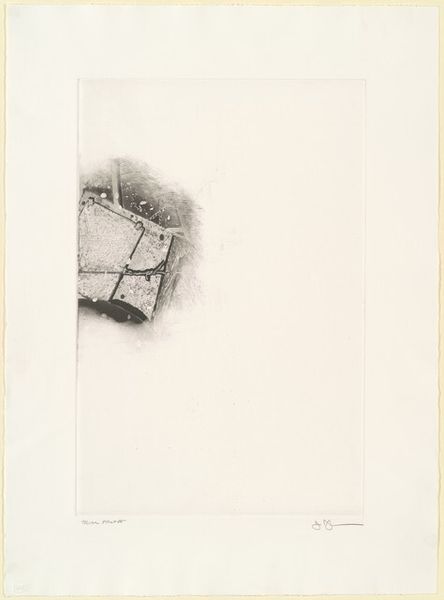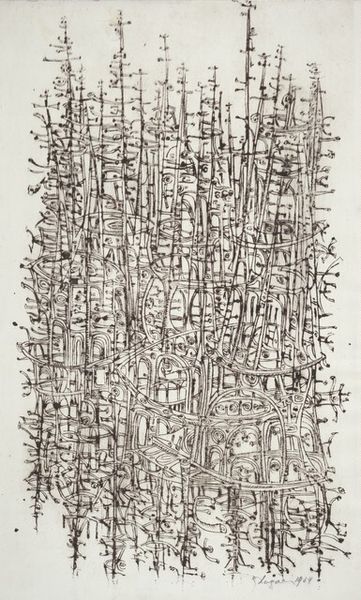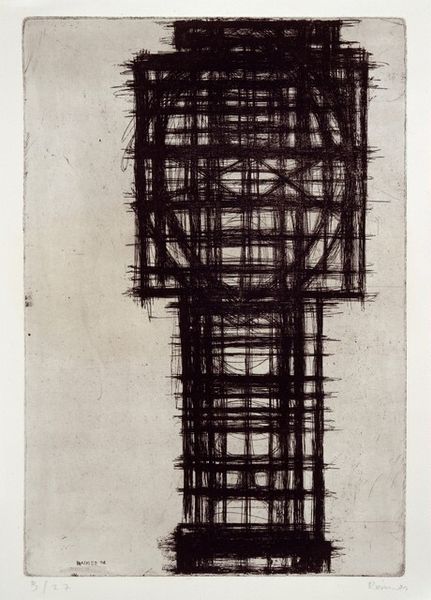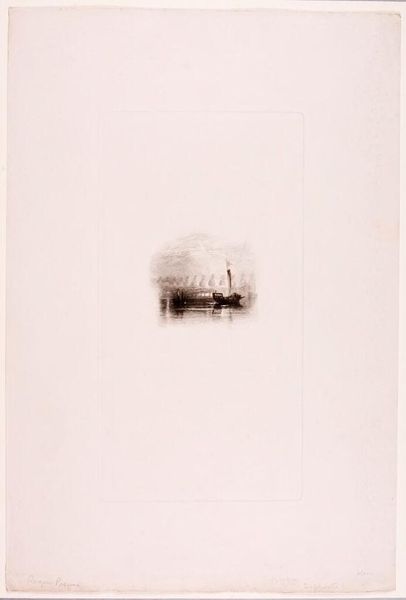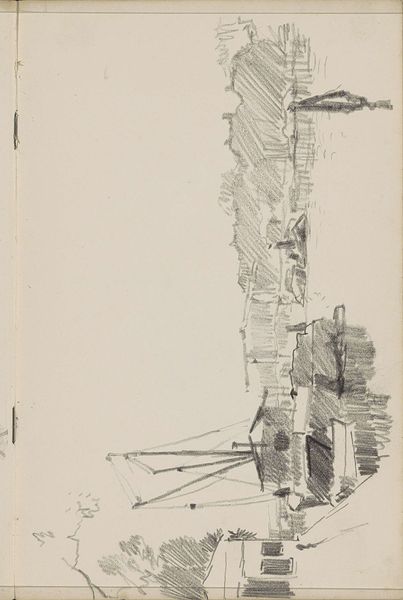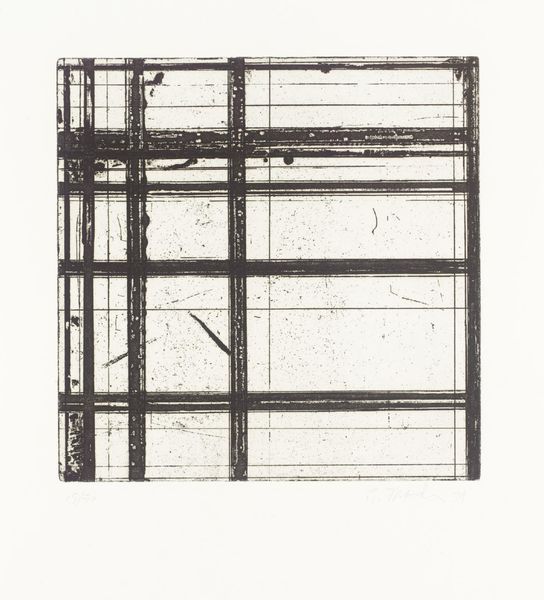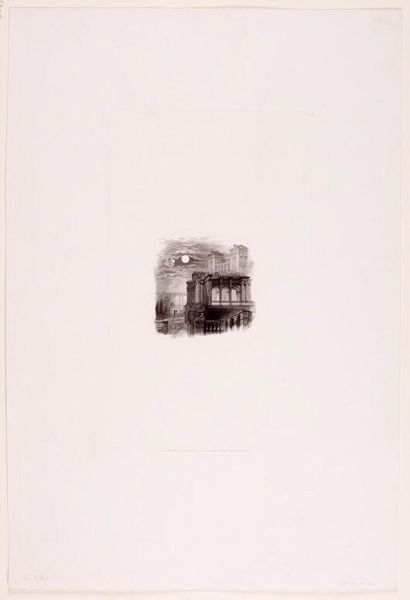
drawing, etching
#
drawing
#
etching
#
etching
#
cityscape
Dimensions: overall: 28.3 x 21.4 cm (11 1/8 x 8 7/16 in.)
Copyright: National Gallery of Art: CC0 1.0
Curator: We’re looking at David Young Cameron’s etching, "Back Court, Trongate," created in 1889. It's a captivating portrayal of urban architecture. What strikes you initially? Editor: Its stark, almost melancholic, mood is the first thing that stands out. The intense verticality is unsettling, as if the buildings are towering over us, threatening to consume us in the lower depths of a grim city. Curator: Absolutely. Cameron's adept use of etching captures the subtle tonal gradations that create such a mood. Notice how the line work itself describes the texture and decay of the stone and brickwork. The very medium, etching, is a testament to controlled degradation—acid biting into the metal plate. Editor: Indeed, and it highlights the process of the city’s own degradation too. I find myself pondering what inks were used and how consistently. Did he wipe the plate meticulously or let residue linger to deepen the shadows and highlight the urban grime? The level of labor that goes into achieving such a natural-seeming, immediate cityscape. Curator: The composition, while seemingly straightforward, is remarkably effective. The architectural elements lead the eye upwards, creating a dialogue between light and shadow, void and mass. The figure, though small, offers a crucial focal point within the grand, crumbling composition. The line quality alone shows the artist’s mastery and careful observation of the principles of classical composition. Editor: But consider where this work places us. It isn’t a glorious facade or bustling market street. No, it puts us in a back alley—a space typically occupied by those performing the city's menial tasks. Its about seeing art as the record of labor. I am interested in where it falls in high art categories when its focusing in craft, place, and labor. Curator: You make a valid point regarding its context and what it might represent. For me, the true brilliance lies in its formal treatment—the considered balance and tension it creates using light and line. Editor: For me it reveals that the materiality offers another view of art outside of high society: that in of workers, process and labor that built that very society. Curator: It’s fascinating how an artwork can elicit such diverse interpretations, all stemming from the same set of visual cues. Editor: Precisely. This intersection is exactly where art comes alive, providing the most insightful dialogues and revelations.
Comments
No comments
Be the first to comment and join the conversation on the ultimate creative platform.
